Newsroom Formatted Articles - Healthy Living
Mat releases (also known as matte releases or formatted releases) are formatted, ready-to-print articles that are free to use in any publication. CDC's Formatted Release Library has articles on a variety of important health topics.
Please call (404) 639-3286 or e-mail media@cdc.gov with the title of the mat release you would like to use and the name of your publication. We will get back to you within one business day with a watermark-free copy.
Remember to check back for new articles or e-mail media@cdc.gov to get on our distribution list and receive updates when articles are added.
Travel Essential: Measles Vaccination
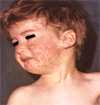 Measles can be brought into the United States from any country where the disease still occurs or where outbreaks are occurring including Europe, Africa, Asia, and the Pacific.
Measles can be brought into the United States from any country where the disease still occurs or where outbreaks are occurring including Europe, Africa, Asia, and the Pacific.
 You can prevent cervical cancer, with regular screening tests and follow-up. Two screening tests help prevent it or find it early.
You can prevent cervical cancer, with regular screening tests and follow-up. Two screening tests help prevent it or find it early.
 Taking care of your vision is a priority, just like eating well and engaging in physical activity. Fortunately, many eye problems and diseases can be treated if caught early.
Taking care of your vision is a priority, just like eating well and engaging in physical activity. Fortunately, many eye problems and diseases can be treated if caught early.
Obesity is Common, Serious, and Costly
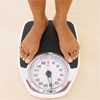 Ever cringe when you step on the scale? Now, think of the entire country stepping on that scale. Imagine the Weight of the Nation. Obesity is a common, serious, and costly health problem, and CDC is working to control and prevent it.
Ever cringe when you step on the scale? Now, think of the entire country stepping on that scale. Imagine the Weight of the Nation. Obesity is a common, serious, and costly health problem, and CDC is working to control and prevent it.
Got Diabetes? Get Your Flu Vaccine During National Diabetes Month
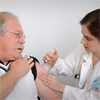 November is National Diabetes Month in the United States, and November 14 is World Diabetes Day. These occasions shine a spotlight on a serious disease that can lead to potentially life-threatening complications such as heart disease, stroke, kidney disease, blindness and amputation.
November is National Diabetes Month in the United States, and November 14 is World Diabetes Day. These occasions shine a spotlight on a serious disease that can lead to potentially life-threatening complications such as heart disease, stroke, kidney disease, blindness and amputation.
The High Price of Excessive Alcohol Consumption
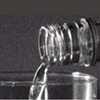 Excessive alcohol consumption is known to cause about 79,000 deaths in the U.S. each year, but a new study released by the Centers for Disease Prevention and Control (CDC) and the Lewin Group shows that it also has a huge impact on our wallets.
Excessive alcohol consumption is known to cause about 79,000 deaths in the U.S. each year, but a new study released by the Centers for Disease Prevention and Control (CDC) and the Lewin Group shows that it also has a huge impact on our wallets.
CDC: Why we do what we do
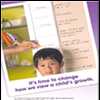 Ronney′s story exemplifies the heart of CDC efforts; protecting and saving lives through prevention. CDC works to support people in making healthy choices to change and improve lives here and around the world. CDC is building on 65 years of public health achievements that have likely saved hundreds of thousands of lives.
Ronney′s story exemplifies the heart of CDC efforts; protecting and saving lives through prevention. CDC works to support people in making healthy choices to change and improve lives here and around the world. CDC is building on 65 years of public health achievements that have likely saved hundreds of thousands of lives.
Keep Mosquitoes and Ticks From Bugging You This Summer: Take Steps to Prevent Bites
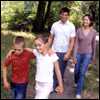 A family walking in a forest Summer allows more time for children to play outdoors, but when kids are covered with bug bites after spending time outside, parents may start to worry about disease spread by ticks, such as Lyme disease, or by mosquitoes, such as West Nile virus. Luckily, parents can take simple steps to prevent bites and diseases spread by bugs.
A family walking in a forest Summer allows more time for children to play outdoors, but when kids are covered with bug bites after spending time outside, parents may start to worry about disease spread by ticks, such as Lyme disease, or by mosquitoes, such as West Nile virus. Luckily, parents can take simple steps to prevent bites and diseases spread by bugs.
CDC Standing Guard
 When the tsunami and earthquake hit Japan and led to a nuclear plant accident, the Centers for Disease Control and Prevention (CDC) began assembling its team to assist Japan with this unprecedented emergency.
When the tsunami and earthquake hit Japan and led to a nuclear plant accident, the Centers for Disease Control and Prevention (CDC) began assembling its team to assist Japan with this unprecedented emergency.
Tips to protect parents and kids from tobacco smoke
 This year, thank a parent who recently quit smoking. An estimated 20 percent of adults in the United States smoke cigarettes, and 7 out of 10 of them want to quit. Some adults who have quit smoking are parents, and their efforts to become smoke-free have made them role models for their children as well as other smokers in their families and communities.
This year, thank a parent who recently quit smoking. An estimated 20 percent of adults in the United States smoke cigarettes, and 7 out of 10 of them want to quit. Some adults who have quit smoking are parents, and their efforts to become smoke-free have made them role models for their children as well as other smokers in their families and communities.
Tracking Health in Your Community
![]() If protecting your family’s health from the effects of the environment were as simple as doing a Google search would you try it? If your answer is “Yes!” the Environmental Public Health Tracking Network (Tracking Network) is just what you need. Information on the Tracking Network can help you protect your health.
If protecting your family’s health from the effects of the environment were as simple as doing a Google search would you try it? If your answer is “Yes!” the Environmental Public Health Tracking Network (Tracking Network) is just what you need. Information on the Tracking Network can help you protect your health.
CDC Website Provides Raw Milk Information
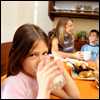 Many people believe that foods with minimal or no processing like organic and locally-grown foods are better for their health. But when people choose to drink raw milk, that is milk that has not been pasteurized, the impact on one’s health can be quite severe. Mary McGonigle-Martin discovered the dangers of raw milk when her young son ended up in a California hospital for several weeks as doctors fought to save his life.
Many people believe that foods with minimal or no processing like organic and locally-grown foods are better for their health. But when people choose to drink raw milk, that is milk that has not been pasteurized, the impact on one’s health can be quite severe. Mary McGonigle-Martin discovered the dangers of raw milk when her young son ended up in a California hospital for several weeks as doctors fought to save his life.
Reducing the Harms from Drinking Too Much by Limiting Access to Alcohol
 Many people believe that foods with minimal or no processing like organic and locally-grown foods are better for their health. But when people choose to drink raw milk, that is milk that has not been pasteurized, the impact on one’s health can be quite severe. Mary McGonigle-Martin discovered the dangers of raw milk when her young son ended up in a California hospital for several weeks as doctors fought to save his life.
Many people believe that foods with minimal or no processing like organic and locally-grown foods are better for their health. But when people choose to drink raw milk, that is milk that has not been pasteurized, the impact on one’s health can be quite severe. Mary McGonigle-Martin discovered the dangers of raw milk when her young son ended up in a California hospital for several weeks as doctors fought to save his life.
Breakfast or Anytime: How to Enjoy Eggs Safely
 However you take your eggs, make sure you enjoy them safely. It is important to take special care when handling and preparing fresh eggs to avoid getting sick from Salmonella Enteritidis. While eggs are one of nature’s most nutritious and economical foods, egg-associated salmonellosis is a serious public health problem in the United States and several European countries. In the United States, we have estimated that one in 50 consumers could be exposed to a contaminated egg each year. If that egg is pooled with many other eggs, not fully cooked, or held at a warm temperature allowing the Salmonella germs to multiply, it can make many people ill.
However you take your eggs, make sure you enjoy them safely. It is important to take special care when handling and preparing fresh eggs to avoid getting sick from Salmonella Enteritidis. While eggs are one of nature’s most nutritious and economical foods, egg-associated salmonellosis is a serious public health problem in the United States and several European countries. In the United States, we have estimated that one in 50 consumers could be exposed to a contaminated egg each year. If that egg is pooled with many other eggs, not fully cooked, or held at a warm temperature allowing the Salmonella germs to multiply, it can make many people ill.
Ten Ways to Shape Up Your Family Reunion to Prevent Type 2 Diabetes
 Family reunions offer a chance to bond with relatives, learn about your heritage, share recipes, and celebrate with your whole family. When learning about your heritage, it is also important to find out if type 2 diabetes runs in your family. Having a family history of type 2 diabetes increases your risk for developing the disease. Take the first step today toward lowering your risk for type 2 diabetes and improving your health and the health of future generations. Find out if you have a family history of the disease.
Family reunions offer a chance to bond with relatives, learn about your heritage, share recipes, and celebrate with your whole family. When learning about your heritage, it is also important to find out if type 2 diabetes runs in your family. Having a family history of type 2 diabetes increases your risk for developing the disease. Take the first step today toward lowering your risk for type 2 diabetes and improving your health and the health of future generations. Find out if you have a family history of the disease.
Workin’ Hard for the Money: How To Stay Safe as a Working Teen
 Every year, millions of teens work in part-time or summer jobs. Early work experiences can be rewarding for young workers – providing great opportunities to learn important job skills. When starting that first job, it’s important that teens be aware of how to stay safe and healthy.
Every year, millions of teens work in part-time or summer jobs. Early work experiences can be rewarding for young workers – providing great opportunities to learn important job skills. When starting that first job, it’s important that teens be aware of how to stay safe and healthy.
Over the River and Through the Woods – How to Stay Safe at Summer Camp
 Summer is a time when kids are out of school and excited about going to sleep-away camp. Help your kids learn simple tips to stay safe and healthy at camp.
Summer is a time when kids are out of school and excited about going to sleep-away camp. Help your kids learn simple tips to stay safe and healthy at camp.
Recreational Water Illness (RWI) Prevention: Take action and stay healthy!
 Swimming is great exercise with many health benefits, but the water you swim in can also spread germs that can make you sick and cause illnesses known as recreational water illnesses (RWIs).
Swimming is great exercise with many health benefits, but the water you swim in can also spread germs that can make you sick and cause illnesses known as recreational water illnesses (RWIs).
Healthy Weight – It’s Not a Diet, It’s a Lifestyle
 When it comes to weight loss, there’s no lack of fad diets promising fast results. But such diets limit your nutritional intake, can be unhealthy, and tend to fail in the long run. The key to achieving and maintaining a healthy weight isn’t about short-term dietary changes. It’s about a lifestyle that includes healthy eating, regular physical activity, and balancing the number of calories you consume with the number of calories your body uses.
When it comes to weight loss, there’s no lack of fad diets promising fast results. But such diets limit your nutritional intake, can be unhealthy, and tend to fail in the long run. The key to achieving and maintaining a healthy weight isn’t about short-term dietary changes. It’s about a lifestyle that includes healthy eating, regular physical activity, and balancing the number of calories you consume with the number of calories your body uses.
Every Family Has Secrets! Could Diabetes Be One of Them?
 Do you know your family’s health history? Or is it like a secret no one wants to talk about? Many health conditions, including type 2 diabetes, run in families. Many people who get type 2 diabetes have one or more family members with the disease.
Do you know your family’s health history? Or is it like a secret no one wants to talk about? Many health conditions, including type 2 diabetes, run in families. Many people who get type 2 diabetes have one or more family members with the disease.
Spring Break Into Health
 Make this year’s spring break memorable by having fun and helping yourself, your friends, and others stay safe and healthy.
Make this year’s spring break memorable by having fun and helping yourself, your friends, and others stay safe and healthy.
What You Should Know About Vaccine Safety
 Vaccines are one of the greatest success stories in public health and have put an end to smallpox, nearly rid the world of polio, and greatly reduced cases and outbreaks of many infectious illnesses, such as measles, to all-time low levels. The United States has access to the safest, most effective vaccines in history. By law before a vaccine can be licensed in the US it must undergo very extensive testing. Once in use, vaccines are continually monitored for safety and efficacy. Vaccines are our best defense against infectious diseases, but no vaccine is 100 percent safe or 100 percent effective.
Vaccines are one of the greatest success stories in public health and have put an end to smallpox, nearly rid the world of polio, and greatly reduced cases and outbreaks of many infectious illnesses, such as measles, to all-time low levels. The United States has access to the safest, most effective vaccines in history. By law before a vaccine can be licensed in the US it must undergo very extensive testing. Once in use, vaccines are continually monitored for safety and efficacy. Vaccines are our best defense against infectious diseases, but no vaccine is 100 percent safe or 100 percent effective.
Bon Voyage! Tips for healthy travel
 Whether you plan to travel to the tropics or hit the slopes at a snowy resort, don’t forget to plan for your health! While every destination is different, these tips can help you plan for a safe and healthy trip.
Whether you plan to travel to the tropics or hit the slopes at a snowy resort, don’t forget to plan for your health! While every destination is different, these tips can help you plan for a safe and healthy trip.
Tracking Health In Your Community
 If you wonder how environmental contaminants in your community affect your health, you can now find information online by using the Environmental Public Health Tracking Network. Developed by the Centers for Disease Control and Prevention (CDC), the Tracking Network is a dynamic Web site that, for the first time, provides health and environmental data in one easy to find location.
If you wonder how environmental contaminants in your community affect your health, you can now find information online by using the Environmental Public Health Tracking Network. Developed by the Centers for Disease Control and Prevention (CDC), the Tracking Network is a dynamic Web site that, for the first time, provides health and environmental data in one easy to find location.
Have Fun, Get Fit, Try Bicycling to Work!
 Want to get in shape, get healthier, and get moving? Do you know the benefits or exercise, yet dread working out because you think it’s too strenuous or too boring? Maybe it’s time to rethink the way you bring physical activity into your life.
Want to get in shape, get healthier, and get moving? Do you know the benefits or exercise, yet dread working out because you think it’s too strenuous or too boring? Maybe it’s time to rethink the way you bring physical activity into your life.
Don’t Go Overboard: Before you go swimming this season, protect yourself and your family from Recreational Water Illnesses (RWIs)
 Swimming season is upon us. The skies are blue, and warm weather has returned. It’s time to break out the swim suits, lather on the sunscreen, and head to the local pool.
Swimming season is upon us. The skies are blue, and warm weather has returned. It’s time to break out the swim suits, lather on the sunscreen, and head to the local pool.
Swimming and other water-related activities such as water skiing and boating are excellent ways to spend leisure time and to engage in physical activity. However, it is important for everyone to follow basic guidelines to prevent Recreational Water Illnesses (RWIs).
Collecting Your Family’s Medical History Could Save Your Child’s Life
 You might not realize that your father’s diabetes or your cousin’s sickle cell disease could affect your child, but this family history information could help save your child’s life. According to a Pediatrics supplement, “Use of Family History Information in Pediatric Primary Care and Public Health,” that’s not the only family history information that can affect your child’s health or be important to their health care. Along with genes, your family often has similar behaviors, such as exercise habits, and a common culture, such as the foods you eat. You may live in the same area and come into contact with similar environmental factors. Family history includes these factors, which can all affect health.
You might not realize that your father’s diabetes or your cousin’s sickle cell disease could affect your child, but this family history information could help save your child’s life. According to a Pediatrics supplement, “Use of Family History Information in Pediatric Primary Care and Public Health,” that’s not the only family history information that can affect your child’s health or be important to their health care. Along with genes, your family often has similar behaviors, such as exercise habits, and a common culture, such as the foods you eat. You may live in the same area and come into contact with similar environmental factors. Family history includes these factors, which can all affect health.
Fit Physical Activity into Your Life, Your Way
 The more you do, the more benefits you gain. Adults gain substantial health benefits from two hours and 30 minutes a week of moderate aerobic physical activity, and children benefit from an hour or more of physical activity a day, according to the new Physical Activity Guidelines for Americans. On October 7, 2008, the U.S. Department of Health and Human Services (HHS) released the 2008 Physical Activity Guidelines for Americans, a comprehensive set of recommendations for people of all ages and physical conditions.
The more you do, the more benefits you gain. Adults gain substantial health benefits from two hours and 30 minutes a week of moderate aerobic physical activity, and children benefit from an hour or more of physical activity a day, according to the new Physical Activity Guidelines for Americans. On October 7, 2008, the U.S. Department of Health and Human Services (HHS) released the 2008 Physical Activity Guidelines for Americans, a comprehensive set of recommendations for people of all ages and physical conditions.
Hispanic Babies are at Higher Risk of Brain and Spine Birth Defects: Mothers Who Take Folic Acid can Reduce that Risk
 Get Smart Each year in United States approximately 3,000 pregnancies are affected by serious defects of the spine and brain called neural tube defects (NTDs). Hispanic women have a 30-40 percent higher risk of having babies with these birth defects. NTDs occur in the first few weeks of pregnancy, very often before a woman even knows she is pregnant. Folic acid has been found to prevent up to 70% of NTDs. Yet, only 21% of Hispanic women report consuming enough folic acid as compared to 41% of white women.
Get Smart Each year in United States approximately 3,000 pregnancies are affected by serious defects of the spine and brain called neural tube defects (NTDs). Hispanic women have a 30-40 percent higher risk of having babies with these birth defects. NTDs occur in the first few weeks of pregnancy, very often before a woman even knows she is pregnant. Folic acid has been found to prevent up to 70% of NTDs. Yet, only 21% of Hispanic women report consuming enough folic acid as compared to 41% of white women.
Sniffle or Sneeze? No Antibiotics Please
 Get Smart CDC advises parents about colds, flu and antibiotics The Centers for Disease Control and Prevention (CDC) has news for parents this cold and flu season: antibiotics don’t work for a cold or the flu. Antibiotics kill bacteria, not viruses. And colds, flu and most sore throats are caused by viruses. Antibiotics don’t touch viruses — never have, never will. And it’s not really news. It’s a long-documented medical fact.
Get Smart CDC advises parents about colds, flu and antibiotics The Centers for Disease Control and Prevention (CDC) has news for parents this cold and flu season: antibiotics don’t work for a cold or the flu. Antibiotics kill bacteria, not viruses. And colds, flu and most sore throats are caused by viruses. Antibiotics don’t touch viruses — never have, never will. And it’s not really news. It’s a long-documented medical fact.
- Page last reviewed: July 24, 2014
- Page last updated: July 24, 2014
- Content source:



 ShareCompartir
ShareCompartir